The 𝐾+→𝜋+𝜈𝜈̅ decay is a golden mode for flavour physics. Its branching ratio is predicted with high precision by the Standard Model to be less than 10^(−10), and this decay mode is highly sensitive to indirect effects of new physics up to the highest mass scales. A new measurement of the 𝐾+→𝜋+𝜈𝜈̅ decay by the NA62 experiment at the CERN SPS is presented, using data collected in 2021 and 2022....
Femtoscopy is a powerful tool that uses correlation techniques to probe the interactions between hadrons. In Run 2 of the LHC, the ALICE Collaboration confirmed, based on the measurement of kaon-deuteron correlations, that particle pairs involving one deuteron exhibit the same transverse mass scaling as other hadron-hadron pairs, consistent with predictions from the resonance source model....
The hadron-nucleus and nucleus-nucleus interactions for laboratory energy between 100 MeV/u and about 1 GeV/u play a key role in interesting application of nuclear physics: hadrontherapy and radioprotection on Earth and in space are probably the most important. In all these areas, Monte Carlo codes have now gained a leading role. For example, in medical applications, their use is very...
AMBER (NA66) is a fixed-target experiment at M2 beam line of the SPS at CERN, devoted to various fundamental QCD measurements. Several major upgrades of the spectrometer are planned for the medium and long-term AMBER program. Within the upgrade program we are designing together with the CERN MPT workshop 1x0.5 m^2 bulk resistive MICRO-MEsh GAseous Structure (MM) detectors and in parallel a...
The study of geoneutrinos produced from radioactive beta decay in the Earth's crust and mantle offers insight into the planet's heat budget, with these decays from primordial isotopes providing a significant but incompletely understood contribution to Earth's internal heat. After their initial detection a few years back, upcoming large-scale experiments are anticipated to detect geoneutrinos...

